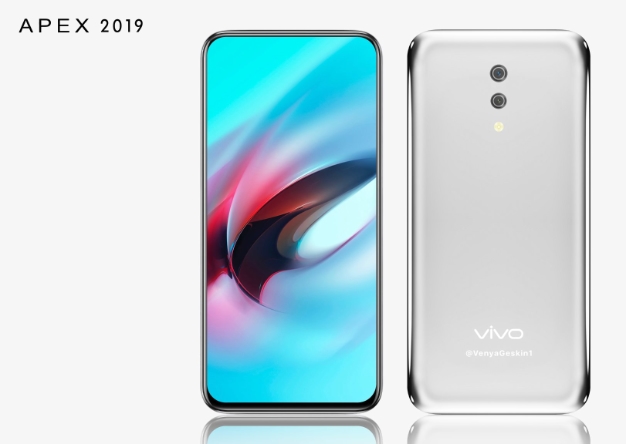Vivo's Apex 2019 Concept Is An Absolutely Gorgeous Button Free Flagship Phone
It appears that notches that were all the rage in 2018 flagship Android smartphones are either quickly shrinking or disappearing completely. Now, it looks as though physical buttons may be the next smartphone staple to get kicked to curb if Vivo has anything to say about it.
This is the new Apex 2019, which is a smartphone concept from Chinese OEM Vivo. The Apex 2019 takes minimalistic design to the max by getting rid of any physical buttons. That's right, you won't find a power button or rockers for controlling the volume. Instead, you will discover a completely smooth body and rounded edges that said to be like a pebble.
What's even more intriguing is that the Apex 2019 won't even include a USB-C port. Now we've almost gotten used to the fact that the 3.5mm jack is being abandoned at a rapid clip, but removing the USB-C port seems like a big no-no. Well, Vivo seems unbothered, because the Apex 2019 will apparently support wireless charging and wireless connectivity for everything else. Either bring along a set of Bluetooth headphones or you're out of luck if you want to listen to tunes privately on-the-go.
Vivo APEX 2019 Promo Video
— Ben Geskin (@VenyaGeskin1) January 22, 2019
(via https://t.co/Ialz8TWyAY) pic.twitter.com/Z3Sl9g8XCw
Since there are no openings for ports, the Vivo Apex 2019 doesn't include a front-facing camera, which is probably a deal breaker for the selfie-obsessed younger generation. The lack of external ports also means that the Vivo Apex 2019 has to rely on an eSIM to support your wireless carrier of choice.
Of course, as you would expect in a time when display notches are quickly shrinking or disappearing altogether, the Apex 2019 features a notch-free, edge-to-edge display up front with minimal bezels. We are also looking at an in-display fingerprint reader, which is quickly gaining traction in flagship Android smartphones. Out back are dual cameras and an LED flash.
Vivo is expected to fully unveil the Apex 2019 Concept on Thursday in China. For those keeping score, Vivo’s Apex 2018 concept debuted early last year with a pop-up selfie camera. The device eventually became the Nex.


